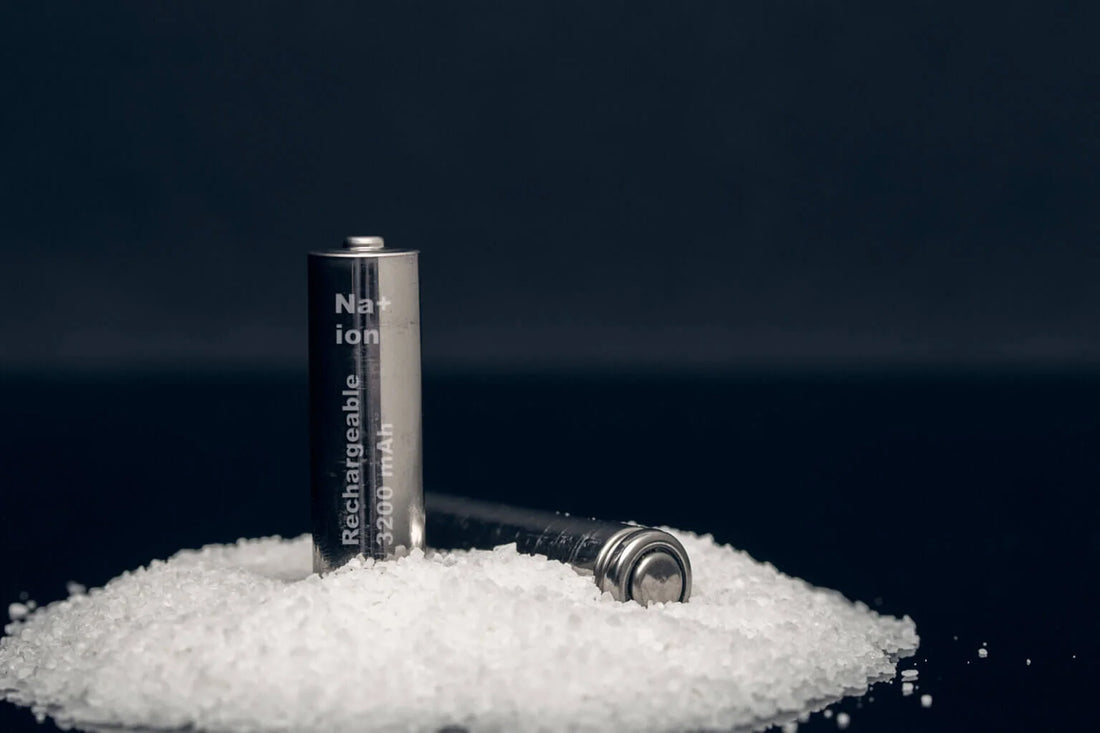The sodium-ion battery (NIB or SIB) is a type of rechargeable battery that uses sodium ions (Na+) as its charge carriers. Its working principle and cell construction in some case are similar to those of lithium-ion battery (LIB) types, but replace lithium with sodium. SIBs received academic and commercial interest in the 2010s and 2020s, largely due to the uneven geographic distribution, high environmental impact and high cost of many of the materials required for lithium-ion batteries. Chief among these are lithium, cobalt, copper and nickel, which are not strictly required for many types of sodium-ion batteries. The largest advantage of sodium-ion batteries is the natural abundance of sodium. Challenges to adoption of SIBs include low energy density and insufficient charge-discharge cycles.

The technology is not mentioned in a United States Energy Information Administration report on battery storage technologies from 2021 and electric vehicles using sodium-ion batteries are not commercially available. However CATL, the world's biggest battery manufacturer, announced in 2022 the start of mass production of SIBs.
Na ion battery VS Li ion Battery
Energy density-It is the amount of electrical power that can be stored in a given space or system. Studies show that typical lithium battery systems have higher energy density than sodium-ion batteries.Conventional lithium batteries have specific energy in the 120-260 Wh/kg range.
Geographic distribution of the metal ions-Some studies show that Australia, Chile,Argentina and China are home to almost all the lithium. This estimate becomes more evident from the fact that China is home to the world's largest lithium-based battery makers. Sodium, owing to its wide natural occurrence. is easier to source.
Availability of resources-Lithium is non-uniformly distributed in the earth's crust and is harder to extract. On the other hand.sodium is much easier to source as it is the sixth most abundant element. But when we compare the impact on resource depletion, the picture gets more complicated.This is the impact caused due to the use of heavier, bigger structures for making Na+ batteries.This is because Na+ batteries have a lower energy density than Li+ batteries. So a lower energy density will need a larger battery which means more metals and materials for battery making.
Fast charging capacity and cycling behaviour- One of the significant concerns with lithium-ion batteries is the fire hazards they can cause, as they are susceptible to high temperatures and inflammable.Li+ battery packs degrade much faster than expected due to heat. In contrast, Na+ batteries discharge until 0 Volts,preventing leakage of electric current when in transit. Besides,some Na+ batteries have shown faster charge and discharge capability than Li+
Sodium-ion batteries have several advantages over competing battery technologies. Compared to lithium-ion batteries, sodium-ion batteries have somewhat lower cost, slightly lower energy density, better safety characteristics, and similar power delivery characteristics.
The table below compares how NIBs in general fare against the two established rechargeable battery technologies in the market currently: the lithium-ion battery and the rechargeable lead–acid battery.

Lithium is the most common element in battery manufacturing, with China controlling the global lithium-ion battery supply chain (79% of all lithium-ion batteries). China also controls 61% of global lithium refining capacity used for battery storage and electric cars.
The next big supplier is Argentina, accounting for 21% of global deposits, giving it tremendous power in raw material mining and to influence the lithium supply chain, with 13 proposed projects and dozens more in the works.
Lithium-ion batteries are made of scarce and pricey elements such as cobalt and lithium. Lithium prices have increased by more than 700% since 2021 amid rising demand for batteries. Lithium-based batteries would likewise have difficulty meeting the increasing demand for power grid energy storage. Technology companies are looking for alternatives to replace traditional lithium-ion batteries.
Challenges for Sodium-ion Battery
Despite the advantages, sodium ion battery manufacturing needs to overcome several challenges before it can be widely adopted as a replacement for lithium-ion batteries.
Lack of a well-established supply chain for the materials used in the batteries.
Since the technology is still in its infancy, very few companies operate in this segment, leading to higher cost of batteries.
The technology to make sodium-ion batteries is still in the early stages of development.
Sodium-ion based batteries have limitations of flexibility as they cannot be turned into various shapes like prismatic, cylindrical etc.
These are less dense and have less storage capacity compared to lithium-based batteries.
Existing sodium-ion batteries have a cycle life of 5,000 times, significantly lower than the cycle life of commercial lithium iron phosphate batteries, which is 8,000-10,000 times.

